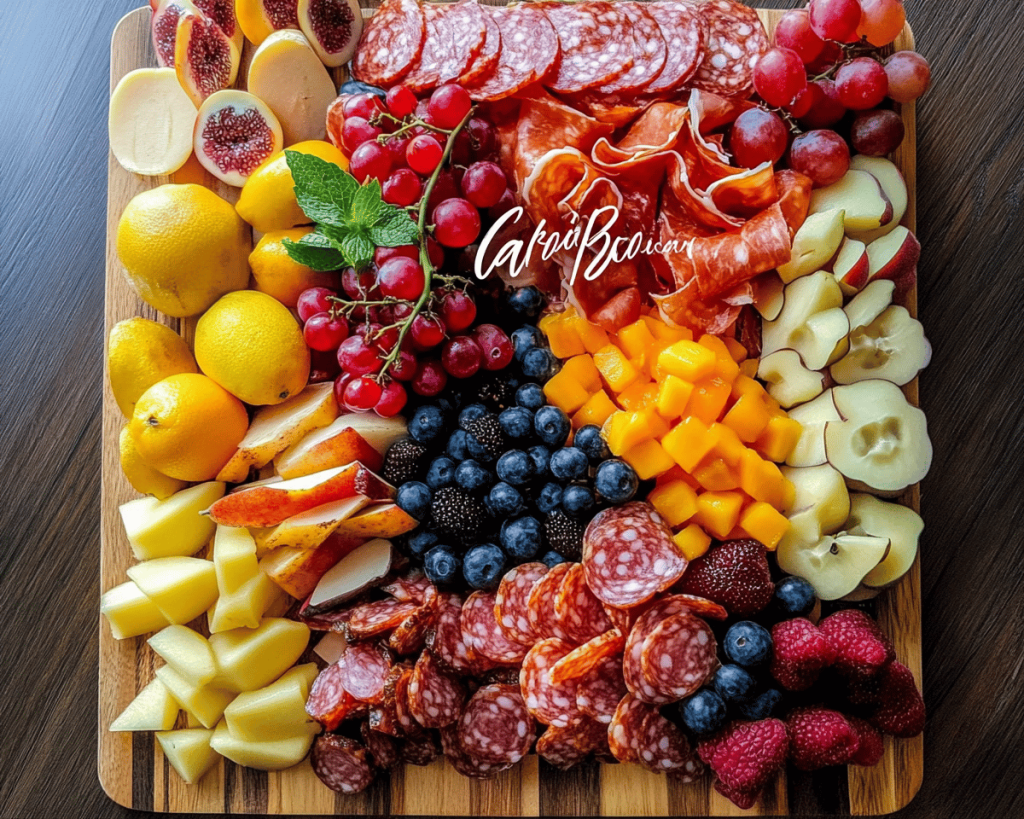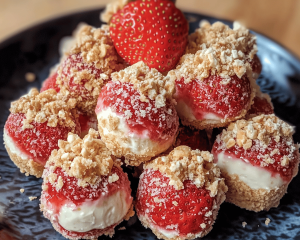A Fruit Charcuterie Board: 7 Irresistible Tips for Perfection
When I first entertained the idea of assembling a fruit charcuterie board, I was met with skepticism from my friends. They couldn’t envision how an assortment of fruits could deliver the same allure as its meat-and-cheese counterpart. It was a medium where I had yet to explore; a blank canvas in the illustrious realm of culinary escapades. The vibrant hues of seasonal fruit awaited me, poised to transform into something utterly delightful. Little did they know, I was prepared to prove to them that fruit could indeed shine in all its glory—much like a fine charcuterie spread.
It all began on a summer afternoon. The sun was warm, casting playful shadows across my kitchen counter, and I envisioned an array of colors tugging at my senses. I recalled the long table at my grandmother’s house, laden with fruits gathered from her garden—plump peaches, crisp apples, and juicy berries. Each visit was a sensory overload: the sweet perfumes mingling, beckoning to be enjoyed and savored. Inspired by these memories, I embarked on a fruity journey that would soon become one of my cherished party staples.
In preparing my fruit charcuterie board, I realized that it’s not just about casting fruit together; it’s an art—an expression of color, texture, and flavors that evoke delight. Over countless board-building sessions, I’ve gathered seven irresistible tips that will help you craft the perfect fruit charcuterie board. These insights, drawn from my own trials and triumphs in the kitchen, are invaluable as you embark on your own fruity masterpiece.
1. Choose a Variety of Fruits
The first rule in designing a fruit charcuterie board is variety. Think of colors, shapes, and textures; let’s play with the unexpected! Delve into an assortment—from soft and juicy to crisp and refreshing. I love to incorporate fresh seasonal fruits, but there are perennial favorites that never leave my lineup. Consider including:
– **Berries**: Raspberries, blueberries, strawberries, and blackberries bring vibrant colors and tartness that play well together.
– **Melons**: Watermelon, honeydew, and cantaloupe are hydrating and refreshing. Their sweetness is a welcome balance to the sharper notes of citrus fruits.
– **Citrus**: Oranges, grapefruits, and limes add brightness and a zesty zing that elevate the entire experience.
– **Stone Fruits**: Peaches, plums, and cherries add a gourmet touch. Their luscious sweetness brings joy.
– **Exotic Delights**: Consider adding dragon fruit or starfruit for visual appeal and unique flavors that surprise.
When curating the fruits, think about balance and contrast. Soft, juicy peaches next to firm apple slices; the smooth surface of a ripe banana paired with the rough exterior of kiwis. Each fruit should tell its story while inviting others to join in an enchanting dialogue.
2. Add Complementary Textures
The texture is an essential element that often goes overlooked. On my fruit charcuterie board, it’s this aspect that surprises and delights guests. Feel free to introduce a healthy mix. Consider incorporating:
– **Nuts**: Almonds, walnuts, or pecans add a satisfying crunch. They not only offer texture but also complement the sweetness of the fruits.
– **Cheeses**: While we might be aiming for a fruit-centric board, pairing it with mild cheeses like ricotta, brie, or a tangy goat cheese can elevate the combination and add creaminess.
– **Spreadable Treats**: A drizzle of honey or a dollop of yogurt introduces an alluring creaminess; both provide a luscious contrast when dipping.
– **Fresh Herbs**: Mint or basil can introduce a fresh bite that invigorates the palate with every fruit morsel.
Layering textures keeps the excitement alive. The interplay between the juicy fruit and the crunchy nuts, or between the sweet berries and the creaminess of cheese creates an engaging and satisfying experience that enhances the overall board.
3. Embrace Seasonal Produce
The beauty of a fruit charcuterie board lies not just in visual appeal, but in its soul—its ingredients. Sourcing seasonal produce elevates your board in ways you might not expect. When a fruit is in season, it’s at its peak flavor, aroma, and juiciness, which makes a significant difference in the overall enjoyment.
When late spring segues to summer, I find myself leaning heavily into stone fruits. The juicy burst of a ripe peach, the simplicity of a cherry, or the sweet nectar of an apricot can take your charcuterie board from ordinary to extraordinary. Similarly, as autumn rolls in, my board may transform to feature crisp apples, succulent pears, and even roasted chestnuts—a nod to the season’s most comforting flavors.
Searching for local farmers’ markets or produce stands can enhance your experience. Supporting local farms not only fosters community but often guarantees the freshest ingredients. I still recall the delight of plucking fresh blueberries straight from the bush, their vitality bursting with each bite. Seasonal produce ties your board to a specific moment in time, imbuding your gathering with character and warmth.
4. Play with Colors and Presentation
Presentation is key; it’s the adornment that draws eyes and encourages conversation. Creating a stunning fruit charcuterie board requires thoughtful assembly. I often think of the board as a work of art, with fruit pieces as vibrant brush strokes on a canvas.
I like to use a large wooden cutting board or a slate platter, which provides both rustic charm and elegance. Starting from the edges and moving inward, I design a mosaic—grouping similar colors together for dramatic effect while allowing for contrast. For instance, luscious red strawberries against bright yellow pineapple provides an energizing visual snack.
Try to balance larger fruits with smaller pieces; arranging your board into sections, from juicier fruits on one side to crunchier ones on the other, creates an inviting flow. Use a small ramekin to hold honey or yogurt, not only for flavor but for visual interest. When guests can visually engage with the board, their curiosity heightens, leading to a more interactive experience.
5. Incorporate Dips and Nibbles
To take your fruit charcuterie to the next level, incorporating dips and small nibbles gives guests the option to satisfy their curiosity or palates. Part of what makes the experience enjoyable is the interaction with different flavors.
Think about serving:
– **Honey or Maple Syrup**: A sweet drizzle adds a fun ritual of dipping and enhances the natural sweetness of the fruits.
– **Yogurt**: Flavored or plain, yogurt is a healthy yet indulgent accompaniment. Mixing in fresh herbs or lemon zest can turn it into a tangy surprise.
– **Nut Butters**: Creamy almond or cashew butter can take the whole experience to a new level of decadent indulgence. Use small spoons, and allow guests to dip slices of fruit for a great combination.
In terms of nibbles, I enjoy adding a small selection of:
– **Dark Chocolate or Chocolate-Covered Fruits**: A touch of chocolate works well with berries and can introduce a delightful complexity to the board.
– **Granola Clusters**: This provides crunch and a bit of chewiness, serving as a delightful surprise.
– **Cheese**: As mentioned earlier, including cheeses that complement the fruits creates a delightful spectrum of flavors.
These little touches can transform a simple fruit platter into a feast that appeals to a range of tastes, making everything harmonious within your board’s narrative.
6. Don’t Forget to Enhance with Herbs and Edible Garnishes
Just as the art of cooking can be elevated with herbs, the same principles apply to your fruit board. Adding fresh herbs or edible flowers brings freshness and liveliness to the mix. I remember a summer gathering where sprigs of lavender were placed decoratively among the fruits—and the aroma was intoxicating!
Fresh mint is a classic herb that pairs beautifully with both sweet and savory fruits. Its cooling qualities enhance the experience, providing a refreshing note that lingers on the palate. Additionally, the bright green colors visually elevate your board, adding contrast.
Consider finishing touches like edible flowers—think nasturtiums, violets, or pansies— as they can impart elegance and an air of creativity. These delicate garnishes invite guests to indulge their senses not just in taste but also in sight, mingling beauty with nourishment.
7. Think of the Occasion and Customize
While the foundation of any fruit charcuterie board begins with splendid ingredients, consider the occasion as a backdrop. What are you celebrating? Whether it’s a summer garden party, a cozy gathering with friends, or a festive holiday, customizing your board can set the tone.
For kids’ parties, I might use cookie cutters to shape watermelon or cantaloupe into fun stars, hearts, or other playful whimsical shapes. For an adult gathering, including seasonal liqueurs, like a bottle of limoncello to sip alongside the board can introduce a sophisticated twist.
In the fall, a warm theme could remain cohesive with pumpkin spice yogurt or even spiced apple slices. During winter months, I might incorporate cranberry sauce or citrus zest into a yogurt dip. It becomes an artistic expression of the thematic elements around us, ultimately reflecting our values and experiences as we gather around the table.
Ultimately, the joy of creating a fruit charcuterie board lies in the experience it cultivates. I have learned through practice that the process can bring people together, weaving stories through shared bites of luscious fruits and thoughtful garnishes. My board has become an ever-evolving canvas—a celebration of the seasons, flavors, and connections among those I love.
As you embark on building your own fruit charcuterie board, remember that the heart of it goes beyond the ingredients. This delightful practice is about exploration, joy, and the shared human experience of good food lifting spirits and connecting us to one another. So gather your friends, take your time as you explore flavors, and may your Fruit Charcuterie Board become a cherished part of your culinary journey.



